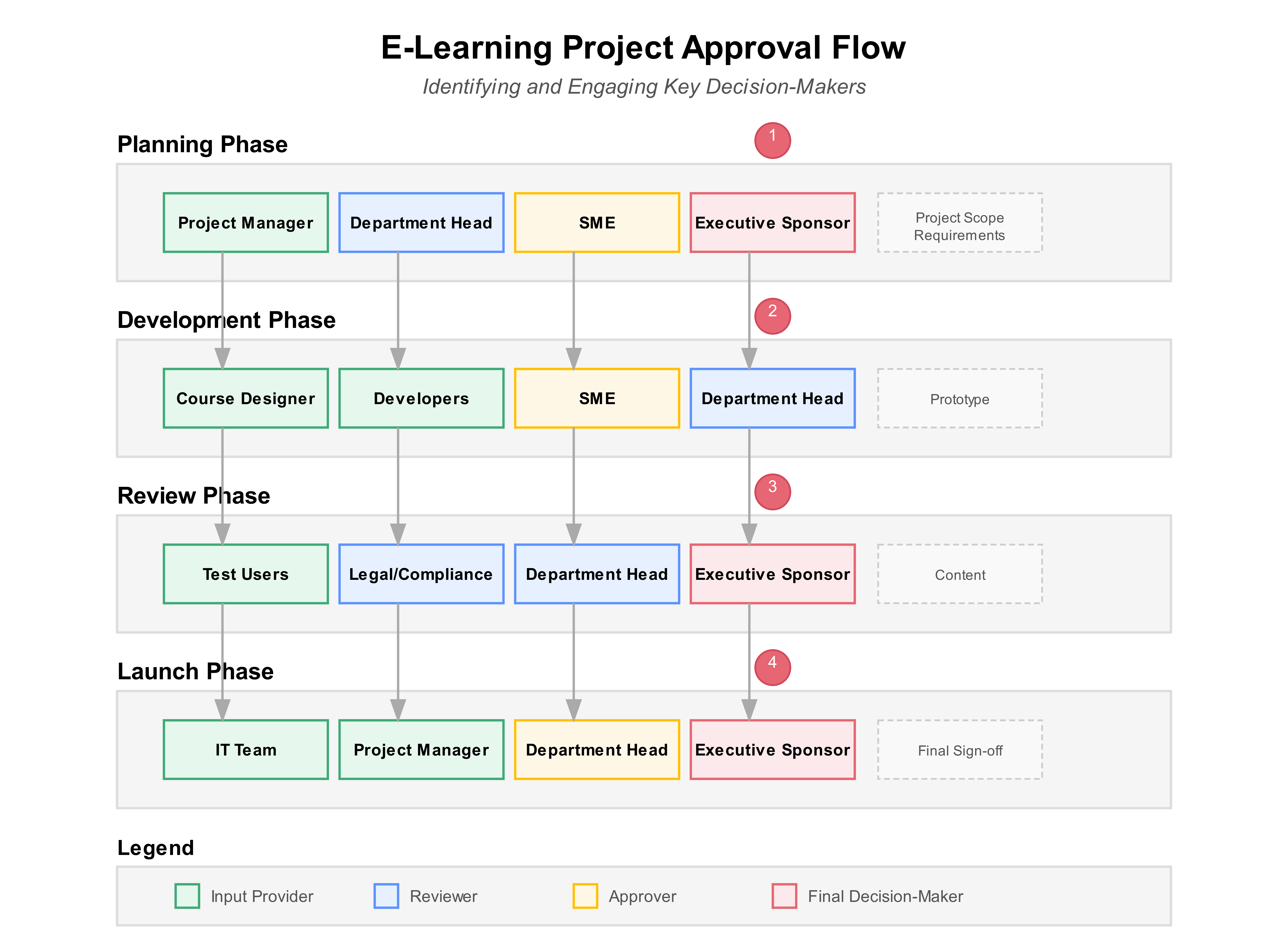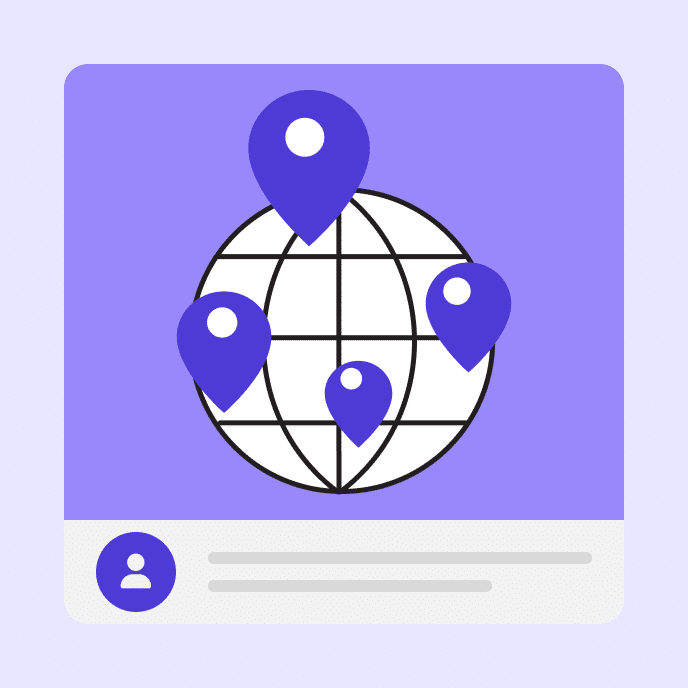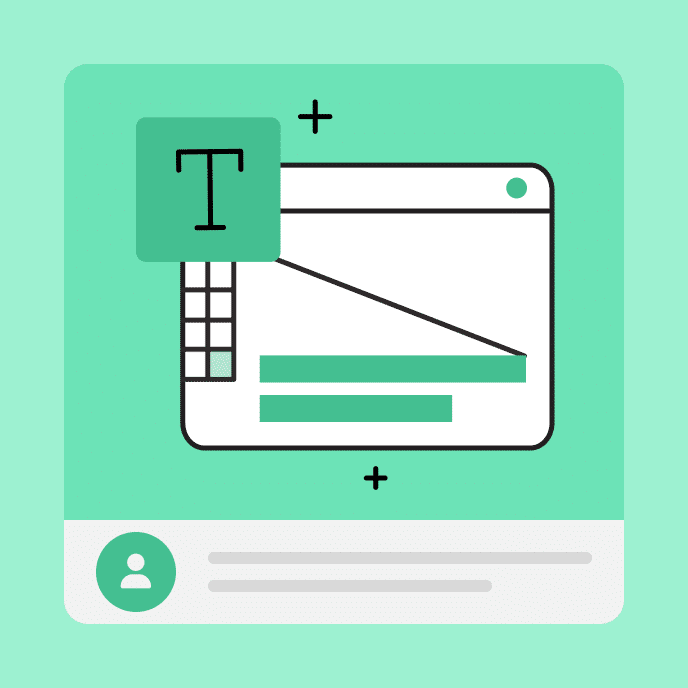Finding the Right Decision-Makers for E-Learning Success
Discover practical strategies to identify and engage the right decision-makers from day one, creating a clear approval path that prevents costly revisions and project delays.

Start your project right by knowing who has the final say
The foundation of any successful e-learning project begins with identifying who truly makes the final decisions. This critical first step can save you countless hours of rework and prevent the frustration of last-minute change requests.
The hidden decision-maker problem
Picture this scenario: You’ve spent three months developing an e-learning course. You’ve worked closely with your assigned stakeholder, incorporating their feedback at every milestone.
The day before launch, your stakeholder proudly invites their boss to review the course—someone you’ve never met. After a brief review, this previously uninvolved executive requests significant changes that will require weeks of additional work.
This all-too-common situation happens when we fail to identify the true decision-makers at the beginning of a project. While your direct contact may have authority over daily decisions, someone else often holds the power of final approval. It’s important to know who that is.
How to identify the real decision-makers
Start by asking these direct questions during your kickoff meeting:
- “Who will give final approval on this project?”
- “Who needs to sign off before this course goes live?”
- “Is there anyone else who might review this course at the end of the process?”
- “Who has the authority to approve or reject major design or content decisions?”
Listen carefully to the responses. If you sense hesitation or vague answers, dig deeper. Sometimes stakeholders themselves don’t realize they lack final authority until late in the project.
Create a formal approval structure
Once you’ve identified all decision-makers, document their roles in your project plan. Create a simple diagram showing:
- Who provides content and subject matter expertise
- Who gives feedback on drafts and prototypes
- Who approves incremental deliverables
- Who gives final sign-off before launch
Share this approval structure with everyone involved and get explicit confirmation from each person that they understand and accept their role in the process.

Involve key decision-makers early
The most effective strategy for preventing last-minute changes is to involve final decision-makers during the prototype phase. Even a 15-minute review session with the ultimate authority can save weeks of work later.
If the final decision-maker claims they’re too busy for early involvement, try these approaches:
- Schedule very brief, focused review sessions (no more than 15-30 minutes)
- Prepare specific questions that require their input rather than asking for open-ended feedback
- Emphasize how early input will save time later and improve the final outcome
- If they still can’t participate, ask them to designate someone who can speak with their authority
Create a change management process
Despite your best efforts, changes may still come late in the project. Protect yourself by establishing a clear change management process:
- Document all requested changes in writing
- Assess the impact on timeline, budget, and resources
- Present options for implementation with associated costs
- Get formal approval for the revised plan before proceeding
This approach helps stakeholders understand the consequences of late changes and gives you the documentation needed to adjust expectations and resources accordingly.
Establish a formal agreement
Create a project charter or statement of work that specifies:
- All identified decision-makers and their roles
- Deliverables and due dates
- Review and approval timelines
- The change management process
- Any budget issues and agreements
Have all key stakeholders sign this document before significant work begins. This agreement becomes your reference point when managing scope changes or addressing questions about authority.
Real-world example: How early identification saved a project
An instructional designer I know was asked to create compliance training for a financial services company. During the kickoff meeting, she asked who would give final approval. Her direct contact mentioned that while he managed the project day-to-day, the legal department would need to sign off on the final content.
Rather than waiting until the end, the designer scheduled a meeting with the legal team during the storyboard phase. The legal reviewers identified several critical compliance issues that would have required complete reworking had they been discovered later. By involving these hidden decision-makers early, she saved weeks of revision time and delivered the project on schedule.
Key takeaways: identify decision-makers to ensure smooth approvals
Finding and engaging the right decision-makers at the beginning of your e-learning project creates a clear path to approval. Ask direct questions to identify who truly has final say, document roles in a formal agreement, involve key authorities during the prototype phase, and establish a change management process for late requests. These strategies create transparency that protects both you and your stakeholders from the frustration of unexpected revisions.
Next time you kick off an e-learning project, make “Who decides?” your first question. The answer will set the stage for everything that follows.
You may also like

Cut Through the Chaos: How to Update Your Call Center Team
Scrambling to communicate updates? Learn how to keep your call center team aligned, agile, and ready. No more chaos—just confident, consistent support.

